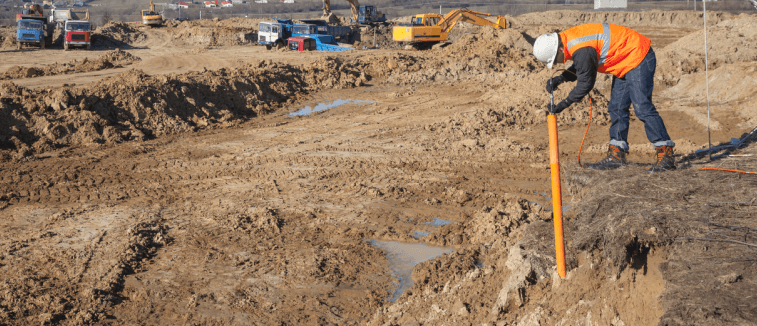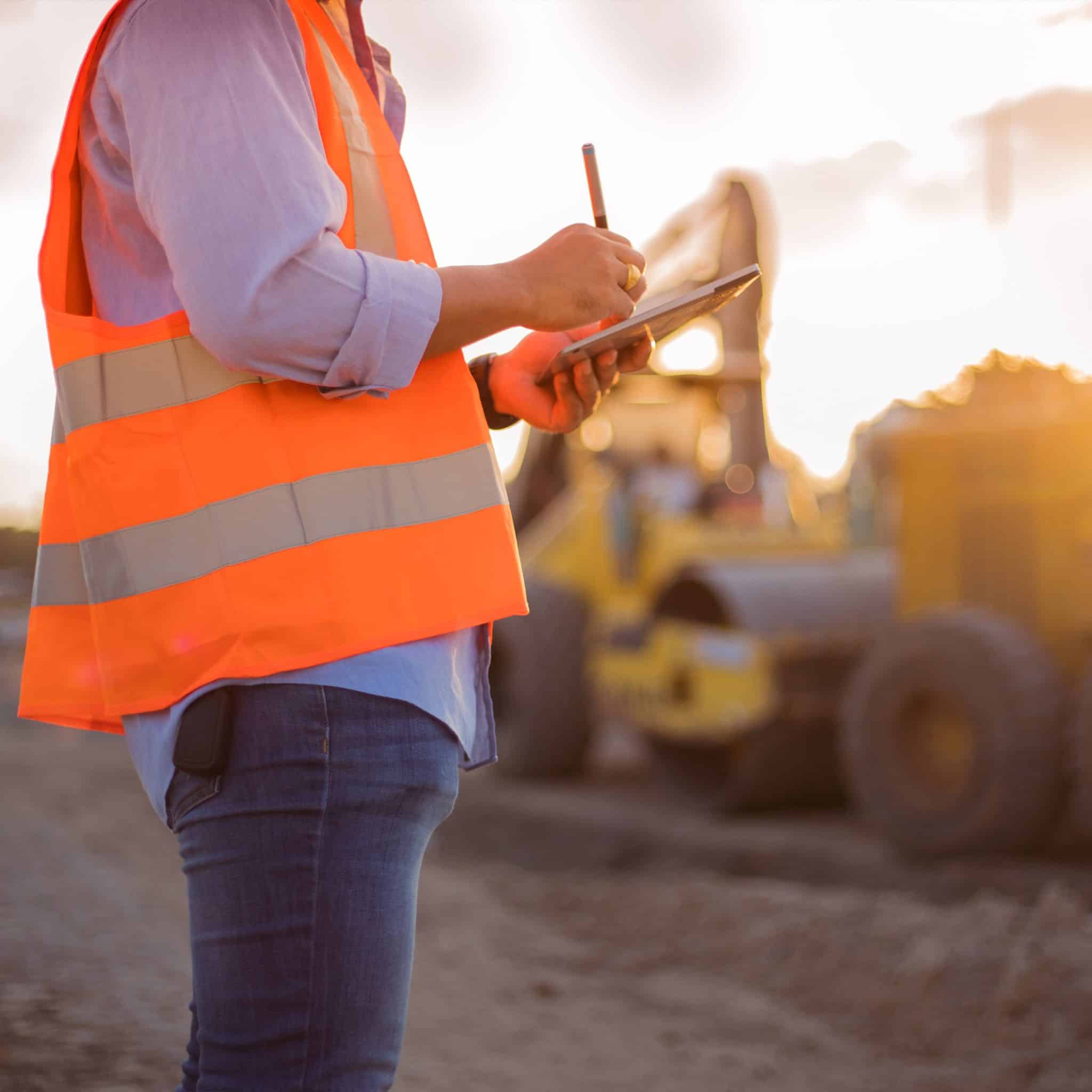Geo Tech Engineer: Enhancing Site Evaluations with Advanced Geotechnical Techniques
Geo Tech Engineer: Enhancing Site Evaluations with Advanced Geotechnical Techniques
Blog Article
Recognizing the Vital Function of the Geotechnical Sector in Modern Construction Projects and Infrastructure Development
The geotechnical sector is a keystone of contemporary construction and infrastructure development, offering crucial insights into dirt habits that straight affect job end results. With advanced soil assessments and cutting-edge engineering solutions, geotechnical specialists not only make sure architectural integrity yet additionally address sustainability concerns amid advancing ecological requirements. As facilities demands grow and brand-new difficulties arise, the relevance of this field becomes progressively noticeable. What ramifications might these developments have for future projects and the general security of our developed environment?
Importance of Dirt Analysis
Soil assessment plays an important role in the geotechnical market, working as the foundation for notified decision-making in building jobs. Exact soil evaluation is crucial for establishing the viability of a site for various sorts of frameworks, including property homes, industrial buildings, and bridges. By examining dirt make-up, wetness, density, and toughness web content, engineers can prepare for prospective difficulties and reduce risks related to ground instability, erosion, and negotiation.
The evaluation procedure usually entails a collection of examinations and monitorings that supply essential information regarding the subsurface conditions. This data educates the layout and construction processes, making certain that structures are improved solid ground with appropriate support. In addition, understanding the soil account allows engineers to choose suitable building and construction techniques and products, maximizing source utilization and decreasing expenses.
Along with making sure architectural integrity, soil evaluation adds to environmental sustainability. By identifying prospective contamination or adverse results on surrounding ecological communities, designers can apply techniques to safeguard these natural deposits. In general, thorough soil analysis is indispensable in the geotechnical field, underpinning the safety and security, effectiveness, and environmental responsibility of construction projects.
Key Geotechnical Techniques
A selection of key geotechnical methods are utilized to analyze and boost the stability and performance of building sites. One fundamental method is soil sampling and screening, which permits engineers to establish the physical and chemical buildings of the ground. This details is critical for making informed choices regarding foundation style and construction approaches.
One more important technique is website characterization, which entails the detailed analysis of soil and rock problems via methods such as borehole drilling and in-situ testing. Methods like Criterion Infiltration Tests (SPT) and Cone Infiltration Tests (CPT) supply valuable information on soil toughness and stratigraphy.
Ground enhancement methods, such as dirt stabilization and grouting, are likewise important in improving the load-bearing capability of weak dirts. These methods can alleviate settlement and enhance general site problems.
Furthermore, incline stability analysis is critical for identifying prospective landslide risks and making sure the security of excavations. This evaluation often employs numerical modeling and limitation balance approaches to forecast dirt habits under various conditions.
Including these geotechnical strategies into building preparation not just maximizes job results yet also guarantees the long-term sustainability of facilities development.
Effect On Building Security

Moreover, effective geotechnical design includes implementing mitigation approaches for recognized dangers. This may include soil stablizing strategies, retaining frameworks, or drainage systems to minimize hydrostatic pressure. By resolving these elements, building and construction groups can lower the chance of mishaps and boost worker safety and security.
Additionally, continual monitoring of site conditions is vital throughout building and construction. Geotechnical tools can supply real-time information pertaining to ground activity and security, enabling for timely interventions when necessary.
In essence, the geotechnical market plays a critical duty in safeguarding construction jobs. By focusing on ground integrity and using extensive assessment approaches, the geotechnical industry not just shields the workforce however additionally adds to the longevity and dependability of built framework.
Sustainability in Geotechnical Practices

Furthermore, geotechnical designers are currently using advanced modern technologies, such as geosynthetics, which improve dirt stability while lowering the volume of product required. This not just preserves sources however additionally brings about less next page waste generation (tailings engineer). The combination of sustainable design concepts right into geotechnical design urges the use of renewable resource sources in construction processes, additionally minimizing carbon emissions
Furthermore, comprehensive website evaluations are vital for recognizing potential environmental effects prior to building and construction starts. By conducting these analyses, geotechnical experts can create techniques that alleviate negative impacts, making sure compliance with environmental regulations. On the whole, the focus on sustainability within geotechnical techniques not just contributes to the longevity and strength of framework yet additionally advertises a liable approach to land and source monitoring. This dedication is vital for fostering sustainable development in the modern construction landscape.
Future Trends in Geotechnical Design
Advancement is driving the future of geotechnical engineering, as arising methods and innovations reshape the market. The assimilation of innovative data analytics and fabricated knowledge is readied to revolutionize website examination and danger evaluation, enabling engineers to make more enlightened choices based on real-time data. Furthermore, the usage of geosynthetic products is obtaining grip, offering lasting solutions that improve soil stability and decrease ecological effect.
One more considerable fad is the fostering of automated and robot systems for surveillance and building and construction procedures. These innovations not only boost precision however also enhance security by minimizing human involvement in unsafe settings. In addition, the application of Structure Information Modeling (BIM) in geotechnical design promotes improved partnership amongst stakeholders, maximizing job distribution and reducing prices.
As climate change postures new obstacles, the sector is significantly concentrating on resilience and versatility in design methods, making certain framework can stand up to extreme weather condition events. The continuous trend toward sustainability will certainly drive advancement in environmentally friendly products and techniques, aligning geotechnical design with more comprehensive environmental goals. Jointly, these patterns will certainly form a much more efficient, hop over to these guys lasting, and resistant geotechnical landscape for future jobs.
Final Thought

The geotechnical industry is a cornerstone of modern-day building and construction and facilities advancement, providing critical understandings right into dirt habits that directly affect job outcomes. consulting engineer.Soil evaluation plays a vital role in the geotechnical sector, serving as the foundation for educated decision-making in construction jobs. Overall, thorough dirt assessment is indispensable in the geotechnical area, underpinning the safety, effectiveness, and ecological obligation of construction tasks
Construction safety and security is substantially influenced by geotechnical techniques, as the stability and stability of the this contact form ground directly impact the overall security of a construction website.In verdict, the geotechnical industry is crucial in contemporary building and construction and infrastructure growth, providing crucial analyses that ensure architectural honesty and safety.
Report this page